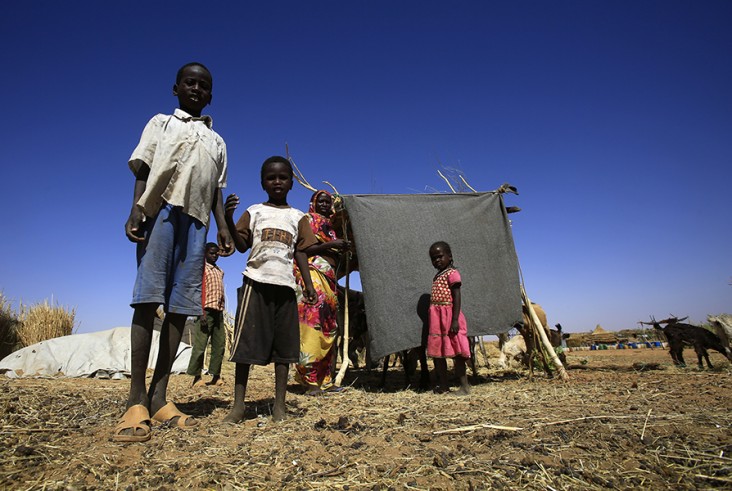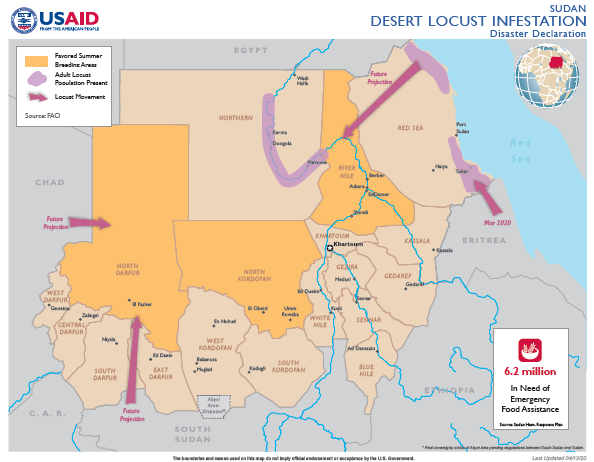- What We Do
- Agriculture and Food Security
- Democracy, Human Rights and Governance
- Economic Growth and Trade
- Education
- Environment and Global Climate Change
- Gender Equality and Women's Empowerment
- Global Health
- Humanitarian Assistance
- Transformation at USAID
- Water and Sanitation
- Working in Crises and Conflict
- U.S. Global Development Lab
Speeches Shim

Latest Sudan Fact Sheet
09.30.2020 - USG Sudan Fact Sheet #4 ![]() (pdf - 496k)
(pdf - 496k)
09.30.2020 - USG Sudan Program Map ![]() (pdf - 1 MB)
(pdf - 1 MB)
view text version [pdf, 496kb]
Key Developments
Widespread flooding resulting from heavy rainfall since mid-July had resulted in the deaths of more than 120 people, adversely affected more than 830,000 people,
and destroyed or damaged 166,000 houses across Sudan as of September 24.
Food assistance needs in Sudan are expected to remain atypically high through at least January 2021 due to multiple factors, including the ongoing macroeconomic
crisis, elevated food prices, the impact of COVID-19 mitigation measures on livelihoods, and flooding.
The GoS and partners have initiated a poliovirus immunization campaign, following the August 8 declaration of Sudan’s first polio outbreak in more than a decade.
Background
Sudan continues to cope with the effects of conflict, economic shocks, and recurrent environmental hazards, such as drought and flooding, resulting in 5.5 million in need of humanitarian assistance. This includes 1.7 million internally displaced persons (IDPs) in Darfur, 235,000 IDPs in the government controlled parts of the Two Areas of South Kordofan and Blue Nile states, and up to 545,000 IDPs residing in locations in the Two Areas that are not under government control. USAID is addressing the acute and protracted needs of conflict-affected populations in Sudan by prioritizing integrated activities in health, nutrition, and water, sanitation, and hygiene. The United States has declared a disaster in Sudan each year since 1987 due to the ongoing complex emergency. As the largest international donor of humanitarian assistance in Sudan, the United States continues to provide impartial, needs-based assistance to vulnerable and conflict-affected populations.


Comment
Make a general inquiry or suggest an improvement.